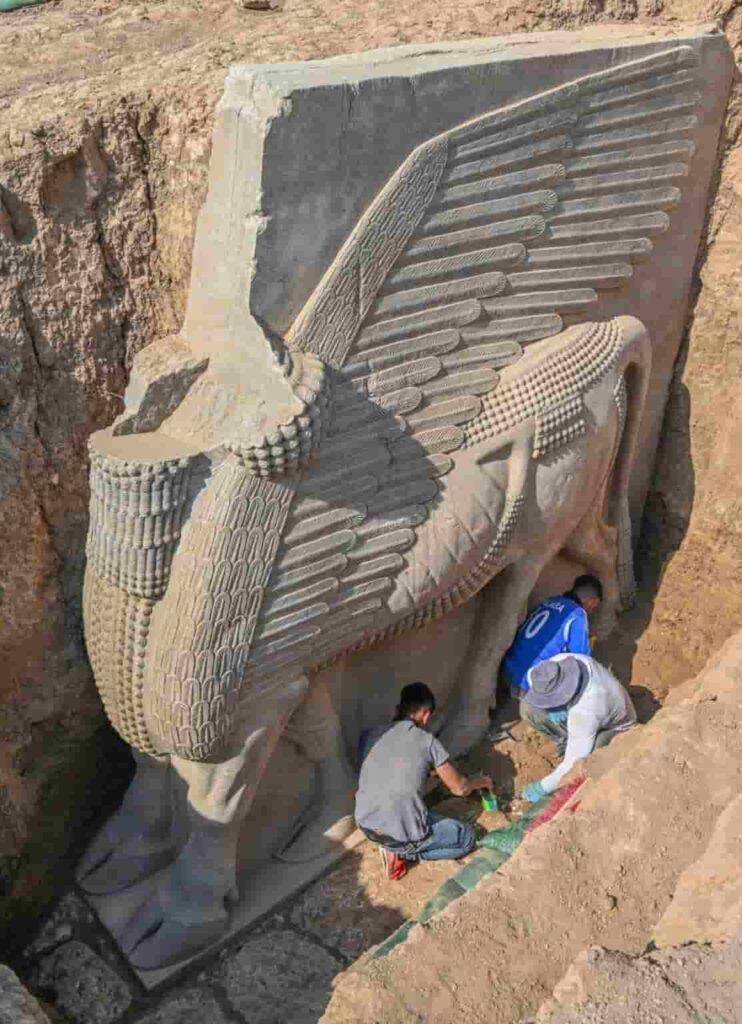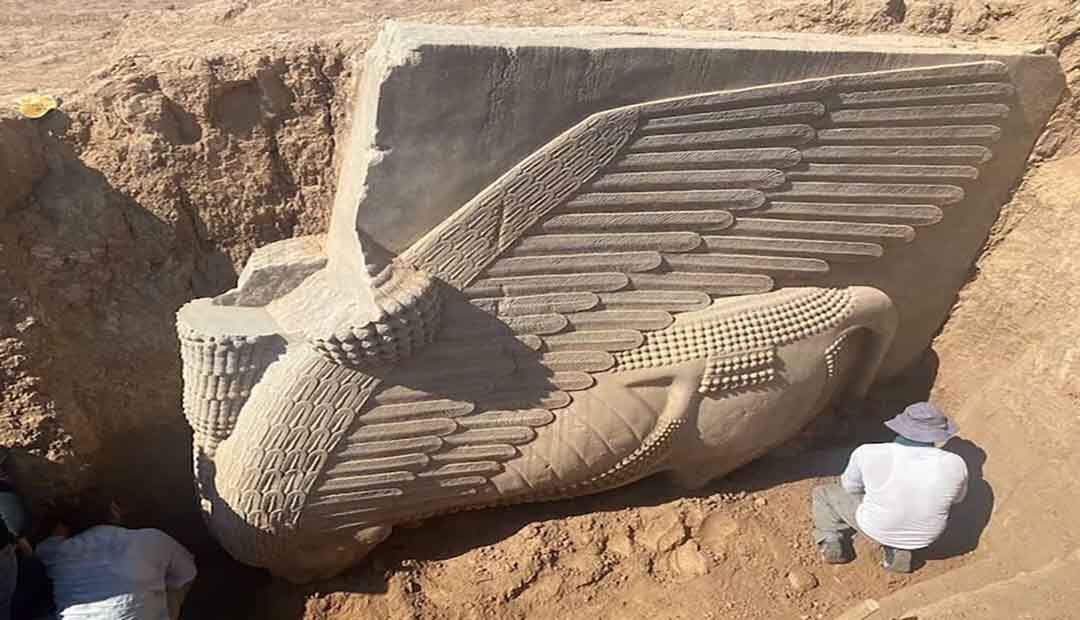2,700-Year-Old Sculpture of Assyrian Deity Unearthed in Iraq
Since its first excavation in 1992, the remarkably well-preserved lamassu sculpture has survived multiple attacks on cultural heritage in the region.
A team of French and Iraqi archaeologists has uncovered a remarkably well-preserved Assyrian lamassu in the ancient city of Dur-Sharrukin, present-day Khorsabad, in northern Iraq. It’s not the first time the 2,700-year-old work has been unearthed; it was hidden for nearly three decades to protect it from looting and targeted attacks on cultural heritage in the region.
In 2014, Iraqi residents near Khorsabad hid the sculpture from ISIS as the militant group undertook a campaign of mass archaeological destruction. Iraqi authorities officially excavated the work in 1992 and then reburied the sculpture to keep it protected. Some 150 years earlier, French archaeologists had documented the artifact in a campaign of expeditions in the region. They took many of the objects they found back to France, and today, the Louvre exhibits other lamassus from Dur-Sharrukin in a reconstructed courtyard from Sargon’s palace.

Iraqi archaeologist and Minister of Culture Ahmed Fakak Al-Badrani led the recent excavation alongside French scholar Pascal Butterlin, who teaches at Paris’s Sorbonne University and has led other French national archaeological expeditions in Iraq and Syria.
In an interview with Hyperallergic, Butterlin explained that the team uncovered the lamassu as part of a larger project examining both recent military activity and the ancient city itself. Lammasus — winged deities often depicted as lions or bulls with human faces — were placed at palace gates throughout Assyria, and this sculpture was staged at an entrance to the home of King Sargon II, who assumed power in the region in 722 BCE.
King Sargon II started building a city at Dur-Sharrukin as a means to assert his newfound power, building a 200-room palace over eight years. When Sargon was killed in battle in 705 BCE, his son moved the capital of Assyria to Nineveh, also in present-day northern Iraq, leaving Dur-Sharrukin unfinished and largely forgotten.
By the time Iraqi scholars uncovered the work in 1992, the United States invasion of Iraq during the Gulf War had left swaths of the country’s cultural heritage in ruins. The ancient lamassu, however, remained in perfect condition.
But three years later in 1995, antiquities smugglers severed the lamassu’s head, cutting it into sections as they attempted to carry it out of the country. The thieves were stopped by customs authorities at the border, and the head was placed in the collection of the Iraqi National Museum in Baghdad.
On April 10, 2003, 21 days after the United States invaded Iraq, looters forcibly entered the museum and took 15,000 artworks over the course of two days. Smugglers began ransacking archaeological sites outside of the nation’s capital. Once again, the lamassu — and its head stored inside the museum — survived.
The 2,700-year-old object would last through another round of cultural destruction as conflicts between ISIS and the US-backed Kurdish militant group Peshmerga erupted in northern Iraq in 2014.
“It was a multidimensional archaeology,” Butterlin said of the recent excavation. “It’s the archaeology of conflicts and urban archaeology, and the lamassu is just at the border of both — with multiple lives.”
The archaeologist said Iraqi authorities are determining what to do with the newly excavated artifact, but one thing has been decided so far: The body of the winged bull will be reunited with its head.




